As I began these courses at the beginning of July, I thought that transitioning into this program would be easy. I have only been out of the post-secondary world for five years and felt like my classroom experience, leadership exemplars, and ability to hoop jump would guarantee smooth sailing throughout the program. I was incorrect. The platform, layout, and thoughtful guest speakers have allowed my classmates and myself to reflect on our own pedagogy, consider new ideas and perspectives, and be vulnerable to sharing the strengths and struggles that go on in our own school contexts. EDCI 515 and EDCI 568 specifically, have pushed my thinking in ways I was not expecting.
At my school, I am not only a classroom teacher, new administrator, but the technology support teacher – a role I took on from a colleague as after she left on maternity leave. Being a millennial, I have an understanding of technology and digital platforms. But as I learned throughout this month, there are many other things I need to consider in my role.
My school has a range of technologies that we are working with – iPads, Chromebooks, and personal devices of students as they bring them from home. We have had staff and classroom conversations about how the technology is to be used, however, I think going forward we need to be more clear and intentional with our use of technology school and district wide. Throughout the revised BC Curriculum, digital literacy has been included, however, I had no idea that there were international standards for technology integration that we should also be referencing in order to ensure students are capable learners in the twenty first century. I hope to share this with my school staff. And to build off of that, I am planning on developing a school technology agreement with my staff. As a collective, we need to decide what our shared understandings, government and district privacy policies, creative commons, copyright, and our school expectations around technology are. We cannot continue to be willfully blind. Now that I have been directed to this information, I feel obligated to share and ensure, as educators, we are modeling safe and respectful technology for our students. As Jesse Miller says, “we cannot change the world of technology that we and our students live in, therefore, we should be focusing on building networked citizens” (personal communication, July 9, 2019)
Is your learning meaningful and authentic or simply academic training? – TeachThought PD https://t.co/QsjVZzcwbI #edchat #sunchat pic.twitter.com/OzCqhMq8G3
— TeachThought PD (@TeachThoughtPD) December 4, 2016
As society is delving deeper and deeper into the world of technology, it is important to be intentional in our teaching. As Dr. Martin Weller mentioned, “we need to think critically about the resources and tools that we are going to use” (personal conversation, July 22, 2019). This means, to find the balance – not cut it out completely, but also not to champion it blindly.
One of the benefits of digital media is the ability to connect through social spaces online. Christine Younghusband explained that through the use of Twitter she has been able to make connections with educators around the world which has grown her own wealth of knowledge and understanding on different topics. Through our exploration of academic articles such as ‘Twitter Use and its Effects on Student Perception of Instructor Credibility’ by DeGroot and VanSlette, I have begun to understand the use of social media for digital scholarship. Something that I continue to struggle with though, is considering whose voices are heard through published research online. In my experience, research favours a certain demographic. I believe that in order to develop a clear and unbiased understanding of something, we need different perspectives. It becomes tricky, however, to get gain a variety of insights in digital scholarship when there are some cultures that are “still predominately based on orally shared intergenerational knowledge” (Bowers, 2018). This starts to create a gap between cultures and generations. Digital scholarship should be used to connect people, not to drive them further apart. As Dr. John Willinsky put it, “how can we use open digital scholarship to become a better educated society?” (personal communication, July 23 2019).
Another idea that has transformed my thinking over the past three weeks was when Shauneen Pete said that it is an educator’s responsibility to get informed and educated about Indigenous history (personal communication, July 16 2019). First of all, Indigenous knowledge is “not a uniform concept spread across all Indigenous peoples, it is a diverse knowledge that is spread throughout different people in many layers” (Onwu & Mosimege, 2004). It is not the responsibility of the first peoples to educate us. I have been feeling this idea inside of myself for a while now. In B.C. there is a big focus on Indigenous ways of knowing as it has been embedded in all aspects of the curriculum. Support teachers and district principles have been hired, but they are constantly being pulled in so many directions. How do we gain knowledge without putting pressure on our local communities as a result of being uncomfortable with our settler history? Through Shauneens’ sharing, I have realized that we should connect and learn through story (personal communication, July 16, 2019). That is how she communicated her masters and doctoral theses and shared her story with us. Based on her suggestions, I have added a list of books that share stories of different perspectives that I hope with confront and challenge my settler identity.
Listening to some of the guest speakers this week, have also led me to question the learning design that takes place in my classroom. Coming into this program, I have five years of teaching experience, have taught in IB schools {Level 1 Trained}, have participated in a district inquiry club, and helped to create and integrate an inquiry cycle at my school. Listening to Jeff Hopkins speak about how he has thoughtfully designed spaces, places, and people to create an environment of inquiry at his school is phenomenal. I appreciated his thoughtful prompt in his TedxTalk – “the world is changing so fast, is our learning serving a purpose in this world?” (TEDx Talks, 2014). If I think about my own classroom, I would have to say no. Students are learning what is in the curriculum in a combination of ways, but I do not think that they see a connection between what they are learning and how that applies to the world around them. I do understand that I need to consider age and stage of my students and how they are able to inquire into the world around them. I have a wide range of learners in my classroom, as most teachers do. I have readers, non-readers, English language learners, native English speakers, students with Ministry designations, some without designations, and students from a variety of home lives. Recently, I heard about this visual that helps educators to plan competencies and curriculum for a unit of student exploration. Picture an upside-down triangle split into three equal sections; in the biggest section at the top, the teacher will write what all students will understand, in the middle, the teacher will write what most students will understand, and in the smallest section at the bottom, the teacher will write with he or she wants some students to understand. This allows educators to plan for a wide variety of learners and to provide effective learning activities for all.
Trevor Mackenzies’ sharing also reminded me that I was on the right track when scaffolding my students through inquiry activities throughout the year (personal communication, July 15 2019). I am hoping that this next year, with older students, I am able to start in the guided inquiry section and move more quickly into the free inquiry portion in order to provide opportunities for my students to explore their own passions and interests – similarly to the PSII students with Jeff Hopkins.
How these understandings are shaping my research area of interest
There seems to be research about the importance of play and inquiry in the classroom for primary students; but how does that translate to intermediate students? As I transition into an intermediate classroom this year, I am hoping to take some teaching and learning strategies from primary and applying them in the middle years. Outdoor exploration and free-play are of particular interest to me. Over the past few years, I have noticed an increased number of students who are unsure and uncomfortable in nature. As I am exploring, there are many factors to consider for this, but one of them is the increased use of technology for our students.
Through the exploratory outdoor play, I am hoping to increase students’ sense of place and connection to the environment. This approach is closely linked to the First Peoples Principles of Learning. Along with the integration of effective applications, I hope to use technology to capture, record, and reflect students’ experiences in nature. Through the interconnection of these two approaches, all learning is accessible and it allows for an even playing field with shared experiences and natural differentiation. With this two-pronged approach, I hope students create a strong understanding of themselves through ‘two eyes’, as Colin Madland shared – one colonizer perspective and one indigenous perspective (personal communication, July 16 2019).
Because being outside and engaging with technology is an experiential process, I think the inclusion of multiple research methodologies would allow for a well-rounded understanding of the topic. I am looking forward to my literature review as I am wanting “to understand what has been doing before, the strengths and weaknesses or existing studies, and what they might mean” for me (Boote & Beile, 2005). The mixed methodologies approach will help to provide quantitative and qualitative data for me to analyze. Built into this approach is validity, trustworthiness, credibility, quality, and rigor (O’Cathain, 2010). The action research approach might also be beneficial as it would allow me to move through the process of questioning, testing, gathering results, and moving forward, similarly to Dr. Simon Breakspears’ Learning Sprints. In order to enhance my understanding of students’ experience of outdoor learning, I could also engage in a phenomenological approach to gathering data. This would, rightfully so, put students at the center of the research.
As my students and I delve into the world of social media and sharing, we need to be conscious about the use of technology. My educational technology pedagogy is aligned to the SAMR model of technology integration (Hamilton, Rosenberg, & Akcaoglu, 2016).
I believe that it is important to use technology for modification and redefinition of learning activities as opposed to using it for the sake of a new and exciting app. I think it is okay to move through the different types of technology integration at different times, but we should be aiming for the top two tiers of this model. And in order for technology use to be effective, educators need to be proficient in the tools and the ecosystems in which they exist (Alec Couros, personal communication, July 8 2019). In my search for effective tools, I will need to ensure that the platforms comply with the FIPPA standards. As well, alongside teaching the use of the app, my students and I will have to explore what it means to be digitally literate in the twenty first century so they know the ‘manners’ of online communication.
What I hope to aim for with the interconnection between outdoor free-play and documentation and reflection using technology, is ensuring balance. There seems to be a focus for primary students on experiential learning and in later intermediate it seems to be on technology. How can we find a balance of both in the middle years? What should students be engaging with and for how long? I look forward to continuing to develop my understanding and adding new insights and approaches to my journey as an educational researcher.
Resources
Boote, D. N., & Beile, P. (2005). Scholars Before Researchers: On the Centrality of the Dissertation Literature Review in Research Preparation. Educational Researcher, 34(6), 3–15. https://doi.org/10.3102/0013189X034006003
Bowers, C. A. (2018). Ideological, Cultural, and Linguistic Roots of Educational Reforms to Address the Ecological Crisis: The Selected Works of C. A. (Chet) Bowers (1st ed.). https://doi.org/10.4324/9781315193403
Guskey, T. (2002). Professional Development and Teacher Change. Teachers and Teaching, 8, 381–391. https://doi.org/10.1080/135406002100000512
Hamilton, E. R., Rosenberg, J. M., & Akcaoglu, M. (2016). The Substitution Augmentation Modification Redefinition (SAMR) Model: A Critical Review and Suggestions for its Use. TechTrends, 60(5), 433–441. https://doi.org/10.1007/s11528-016-0091-y
O’Cathain, A. (2010). Assessing the Quality of Mixed Methods Research: Toward a Comprehensive Framework. In A. Tashakkori & C. Teddlie, SAGE Handbook of Mixed Methods in Social & Behavioral Research (pp. 531–556). https://doi.org/10.4135/9781506335193.n21
Onwu, G., & Mosimege, M. (2004). Indigenous knowledge systems and science and technology education: A dialogue. African Journal of Research in Mathematics, Science and Technology Education, 8(1), 1–12. https://doi.org/10.1080/10288457.2004.10740556
TEDx Talks. (2014). Education as if people mattered | Jeff Hopkins | TEDxVictoria. Retrieved from https://www.youtube.com/watch?v=5O5PK6LsymM

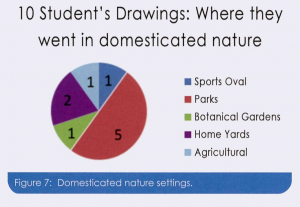
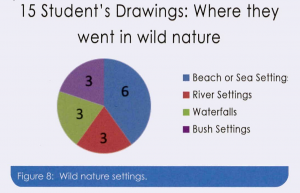
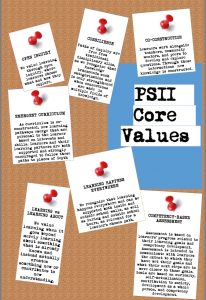
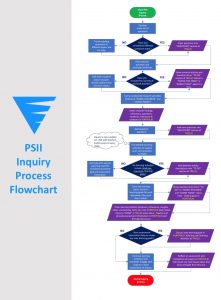
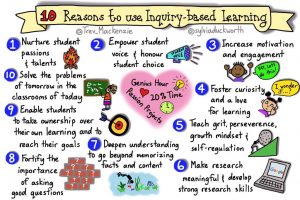 10 REASONS…
10 REASONS…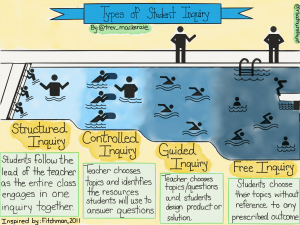 TYPES OF INQUIRY
TYPES OF INQUIRY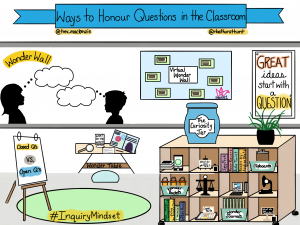 HONOURING QUESTIONS
HONOURING QUESTIONS THE INQUIRY STUDENT: CAPTURES, REFLECTS, AND SHARES THEIR LEARNING
THE INQUIRY STUDENT: CAPTURES, REFLECTS, AND SHARES THEIR LEARNING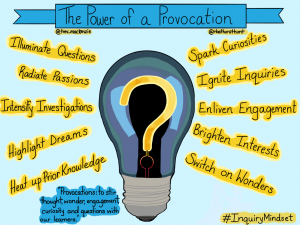 THE POWER OF A PROVOCATION
THE POWER OF A PROVOCATION
Recent Comments